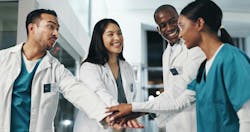In 2004, Saper, et al, demonstrated the presence of heavy metals in some Ayurvedic herbal preparations purchased within a 20-mile radius of Boston. Using X-ray fluorescence spectroscopy, significant amounts of lead, mercury, and arsenic were found to contaminate 14 out of 70 (20%) herbal supplements analyzed. The authors concluded that, based on the amounts of heavy metals present, each of these 14 preparations, if taken as recommended by the manufacturers, could result in heavy metal intake above regulatory limits and could result in toxicity.2
In a more recent study, Saper and colleagues analyzed 193 Ayurvedic medicines purchased online from 25 manufacturers from India and the U.S. The authors again observed that 20.7% of all products contained heavy metals. The prevalence of metals in U.S.-manufactured products was 21.7% compared with 19.5% in Indian products. Of the U.S. products, 21% contained lead, 3% contained mercury, and 3% contained arsenic. Among the Indian made supplements, 17% had lead, 7% had mercury, and none had arsenic.3 Patients with lead poisoning due to the intake of Ayurvedic medicines often showed much higher blood-lead levels compared to patients who experienced lead toxicity from exposure to lead-based paints and also experienced more toxicity from lead.4 Cooper, et al, reported out of 247 traditional Chinese medicines tested, a majority were contaminated with mercury (65%) and a small portion of such medicines were contaminated with arsenic (15%) and lead (5%). Many contaminated products exceeded upper limits of tolerability of heavy metals; in some, the level exceeded the limit by as much as 2,760-fold.5
Case study 1: A 37-year-old man admitted to the hospital had symptoms of weakness, dizziness, nausea, and muscle pain that had developed over a few weeks. Lab test results showed severe anemia with low hemoglobin, but a thorough medical investigation did not identify the cause. The patient then reported he had visited an Ayurvedic practitioner in India who gave him herbal remedies. He also received bowel washing with oil. He continued taking most of the herbal remedies until a few days prior to his hospital admission. Lead poisoning was suspected; his blood-lead concentration was 38 ug/dL. Analysis of the herbal supplement showed high lead content. The patient recovered after chelation therapy with D-penicillamine.6
Case study 2: An 11-year-old girl showed symptoms associated with arsenic toxicity and developed portal hypertension six months and 18 months, respectively, after taking eight Ayurvedic medicines prescribed for epilepsy. Analysis of all eight showed the presence of arsenic, and her serum arsenic level was elevated to 202 ug /L. After discontinuing Ayurvedic medicines, her symptoms were resolved.7
Two major routes by which heavy metals become incorporated into alternative therapies are unintended inclusion during growth or processing of source material and intentional addition during preparation of the final product. Most plants are capable of absorbing and accumulating toxic metals present in soil or water in which they grow; thus, when heavy metals in the soil contaminate the plant from which an herbal supplement is derived, it may alter plant metabolism, suppressing production of secondary metabolites that often have medicinal value.8
Purified metals are often added to certain herbal preparations; Ayurvedic medicines prepared following “Rasa Shastra” guidelines contain higher amounts of metals compared to those following other practices. Traditional practitioners claim the metal ingredients are “detoxified” but this has not been proven by scientific research. Elevated concentrations of heavy metals can lead to chronic and acute illness, and poisoning — requiring aggressive chelation therapy.
Amitava Dasgupta, PhD, D(ABCC), is a professor of pathology and laboratory medicine at the University of Texas Medical School at Houston. He is also the director of chemistry and toxicology at the Memorial-Hermann Hospital at Texas Medical Center.
References
- Kumar A, Nair AG, Reddy AV, Garg AN. Bhasmas: unique Ayurvedic metallic-herbal preparations, chemical characterization. Biol Trace Elem Res. 2006;109:231-254.
- Saper RB, Kales SN, Paquin J, Burns MJ, et al. Heavy metal content of ayurvedic herbal medicine products. JAMA. 2004;292:2868-2873.
- Saper RB, Phillips RS, et al. Lead, mercury and arsenic in US and Indian manufactured Ayurvedic medicines sold via the Internet. JAMA. 2008;300:915-923.
- Kales SN, Christophi CA, Saper RB. Hematopoietic toxicity from lead containing Ayurvedic medications. Med Sci Monit. 2007; 13:CR295-298.
- Cooper K, Noller B, et al. Public health risks from heavy metals and metalloids present in traditional Chinese medicines. J Toxicol Environ Health A. 2007;70:1694-1699.
- Spriewald BM, Rascu A, Schaller KH, Angerer J, et al. Lead induced anemia due to traditional Indian medicine: a case report. Occup Environ Med. 1999;56:282-283.
- Khandpur S, Malhotra AK, Bhatia V, Gupta S, et al. Chronic arsenic toxicity from Ayurvedic medicines. Int J Dermatol. 2008;47:618-621.
- Nasim SA, Dhir B. Heavy metal alter potency of medicinal plants. Rev Environ Contam Toxicol. 2102;203:139-149.





